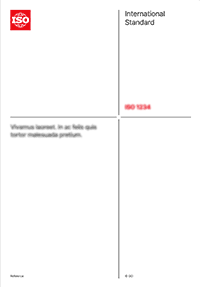Abstract
ISO 14388-2:2014 specifies a suite of methods used to determine the net acidity in acid sulfate soils. ISO 14388-2:2014 specifies a method for measuring chromium reducible sulfur (SCR) by iodimetric titration of distilled hydrogen sulfide trapped as zinc sulfide, following acidic chromous chloride digestion. This method determines inorganic sulfides (e.g. pyrite, marcasite, greigite, mackinawite) and elemental sulfur in acid sulfate soil without interferences from organic sulfur and oxidized forms of sulfur such as sulfate.
On a separate test portion of soil, the pH in a 1 mol/l KCl soil suspension (pHKCl) is determined. When pHKCl is < 6,5, titratable actual acidity (TAA) is then determined. Subsequently, potassium chloride extractable sulfur (SKCl), calcium (CaKCl), and magnesium (MgKCl) can also be determined. Where jarosite is identified in the soil (or where pHKCl is < 4,5), net acid-soluble sulfur (SNAS) is determined by the difference between hydrochloric acid extractable sulfur (SHCl) and potassium chloride extractable sulfur. On samples where pHKCl is < 6,5, acid neutralizing capacity is determined by measuring either inorganic carbon (CIN) by combustion furnace, or ANCBT (ANC measured by back-titration of acid remaining following an acid digest).
General information
-
Status: PublishedPublication date: 2014-08
Corrected version (fr): 2014-09Stage: International Standard confirmed [90.93] -
Edition: 1Number of pages: 18
-
Technical Committee :ISO/TC 190/SC 3ICS :13.080.10
- RSS updates

